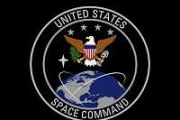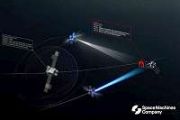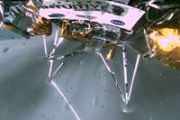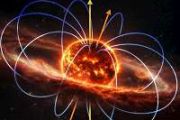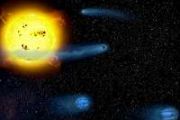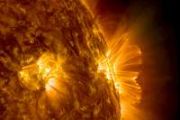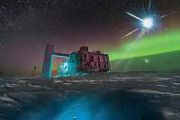
Copernical Team
Read ESA's Strategy 2040

ESA's Strategy 2040
Read the Five Goals
Hera’s incredible adventures in brick building
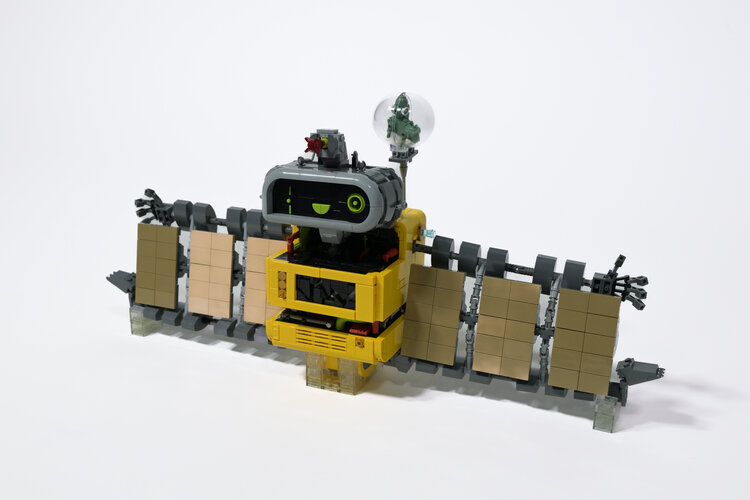
After a hectic four years of work ESA’s Hera mission for planetary defence was launched into space and has just flown by Mars. As a keepsake of the spacecraft they channelled so much effort into, the Hera team also commissioned the building of a detailed model made with LEGO® bricks – as well as smaller variants that you can go ahead and build for yourself!
Senior defense leaders emphasize readiness amid resource challenges
 Senior officers from the Air Force and Space Force addressed the Senate Armed Services Subcommittee on Readiness and Management Support on March 12, emphasizing that both branches remain mission-ready but are grappling with financial limitations and adversarial threats.
U.S. Air Force Deputy Chief for Operations Lt. Gen. Adrian Spain affirmed the force's preparedness: "I can confidently st
Senior officers from the Air Force and Space Force addressed the Senate Armed Services Subcommittee on Readiness and Management Support on March 12, emphasizing that both branches remain mission-ready but are grappling with financial limitations and adversarial threats.
U.S. Air Force Deputy Chief for Operations Lt. Gen. Adrian Spain affirmed the force's preparedness: "I can confidently st SES and Lynk Partner to Expand Direct to Device Network Services
 SES and Lynk Global have entered into a strategic alliance aimed at accelerating growth in the direct-to-device (D2D) satellite communications sector. Under the terms of the agreement, SES will invest in Lynk Global's Series B funding round and deliver a range of integrated services designed to boost Lynk's D2D network performance.
One key feature of the collaboration is the implementation
SES and Lynk Global have entered into a strategic alliance aimed at accelerating growth in the direct-to-device (D2D) satellite communications sector. Under the terms of the agreement, SES will invest in Lynk Global's Series B funding round and deliver a range of integrated services designed to boost Lynk's D2D network performance.
One key feature of the collaboration is the implementation Globalstar launches advanced control center in Louisiana to boost satellite operations
 Globalstar, Inc. (Nasdaq: GSAT) has inaugurated a cutting-edge Satellite Operations Control Center (SOCC) at its Covington, Louisiana headquarters on March 17, marking a major upgrade in its operational infrastructure and a step forward in its strategy to enhance satellite and connectivity services.
Prominent officials, including House Majority Leader Steve Scalise and FCC Chairman Brendan
Globalstar, Inc. (Nasdaq: GSAT) has inaugurated a cutting-edge Satellite Operations Control Center (SOCC) at its Covington, Louisiana headquarters on March 17, marking a major upgrade in its operational infrastructure and a step forward in its strategy to enhance satellite and connectivity services.
Prominent officials, including House Majority Leader Steve Scalise and FCC Chairman Brendan Constellation of student-built satellites launched into orbit from California
 A record-setting constellation of nine nanosatellites, developed by Israeli high school students, has been successfully launched into low Earth orbit from Vandenberg Space Force Base in California. Spearheaded by the Ministry of Innovation, Science, and Technology alongside Tel Aviv University and nine local municipalities, the mission marks the largest satellite formation ever deployed by Israe
A record-setting constellation of nine nanosatellites, developed by Israeli high school students, has been successfully launched into low Earth orbit from Vandenberg Space Force Base in California. Spearheaded by the Ministry of Innovation, Science, and Technology alongside Tel Aviv University and nine local municipalities, the mission marks the largest satellite formation ever deployed by Israe Clarity1 satellite begins VLEO mission after successful deployment
 Albedo has confirmed the successful deployment of its Clarity-1 satellite into orbit aboard SpaceX's Transporter-13 Rideshare mission, which launched from Vandenberg Space Force Base in California. Shortly after reaching orbit, the satellite established communication with Albedo's Mission Operations team and began executing initial commissioning protocols.
Within four hours of separating f
Albedo has confirmed the successful deployment of its Clarity-1 satellite into orbit aboard SpaceX's Transporter-13 Rideshare mission, which launched from Vandenberg Space Force Base in California. Shortly after reaching orbit, the satellite established communication with Albedo's Mission Operations team and began executing initial commissioning protocols.
Within four hours of separating f Big Wheel galaxy challenges early cosmic formation theories
 An international collaboration led in part by Swinburne University of Technology has uncovered a massive spiral disk galaxy from the early universe, providing new insights into galactic formation.
The discovery, made serendipitously through observations with the James Webb Space Telescope (JWST), revealed a disk galaxy from a time just two billion years after the Big Bang - roughly eleven
An international collaboration led in part by Swinburne University of Technology has uncovered a massive spiral disk galaxy from the early universe, providing new insights into galactic formation.
The discovery, made serendipitously through observations with the James Webb Space Telescope (JWST), revealed a disk galaxy from a time just two billion years after the Big Bang - roughly eleven Atomic scale coating advances improve UV space telescope performance
 Observing ultraviolet (UV) light in space opens a window to some of the universe's most energetic phenomena. Yet, the efficient capture of UV photons remains a challenge due to their limited interaction with conventional instrument materials. To address this, scientists are developing thin film coatings engineered at the atomic level to enhance UV light detection capabilities.
At NASA's Je
Observing ultraviolet (UV) light in space opens a window to some of the universe's most energetic phenomena. Yet, the efficient capture of UV photons remains a challenge due to their limited interaction with conventional instrument materials. To address this, scientists are developing thin film coatings engineered at the atomic level to enhance UV light detection capabilities.
At NASA's Je NASA and USGS join forces to advance space resource detection
 NASA and the U.S. Geological Survey (USGS) recently convened a diverse group of stakeholders from government, industry, and the international space community to focus on the technologies needed for future resource exploration, both on Earth and in space. The event, held in February at NASA's Ames Research Center in California's Silicon Valley, centered on tools and methods for locating and utili
NASA and the U.S. Geological Survey (USGS) recently convened a diverse group of stakeholders from government, industry, and the international space community to focus on the technologies needed for future resource exploration, both on Earth and in space. The event, held in February at NASA's Ames Research Center in California's Silicon Valley, centered on tools and methods for locating and utili 
